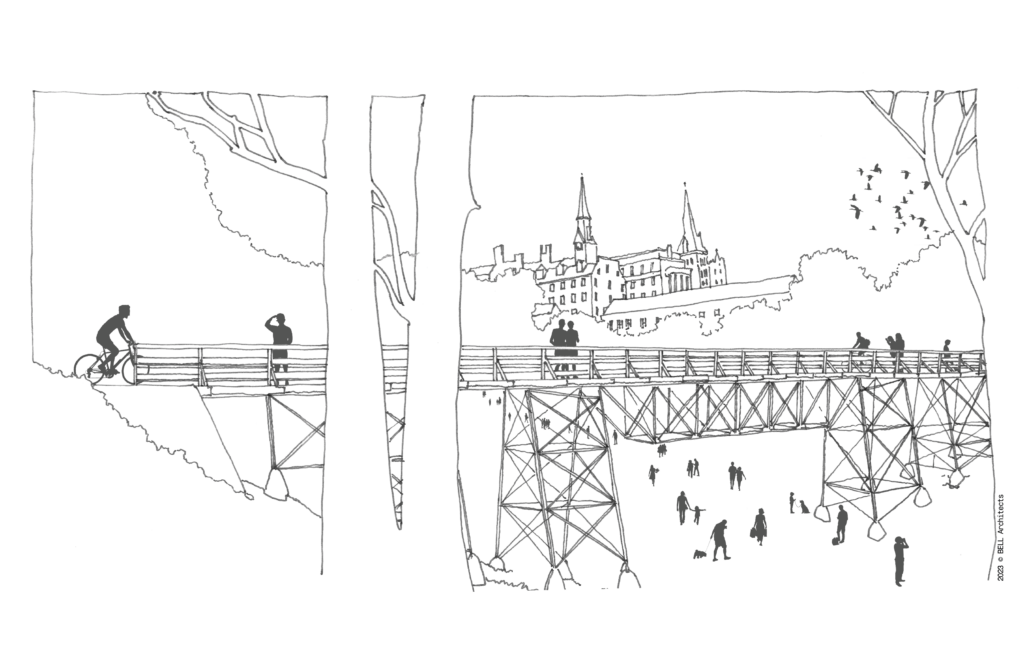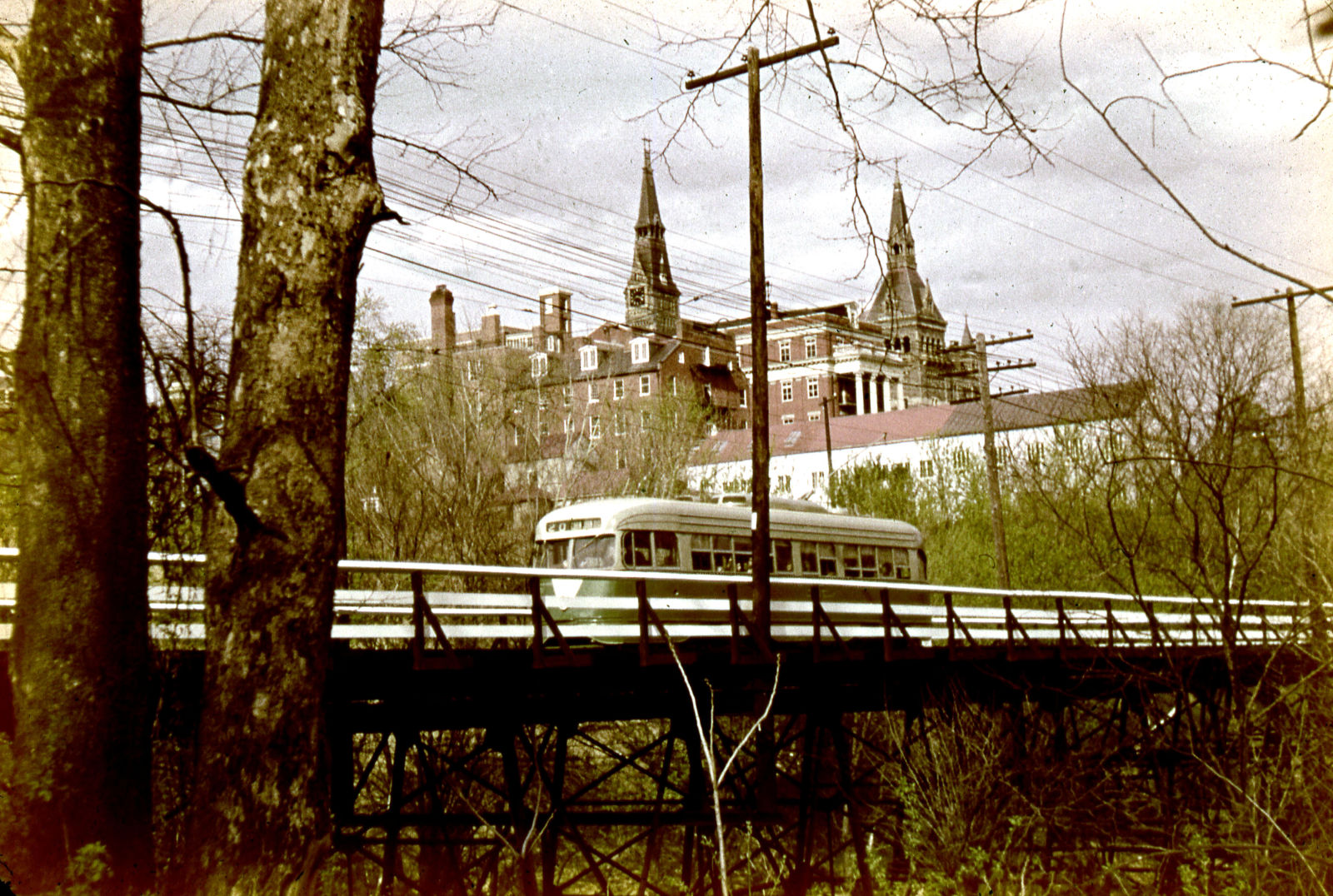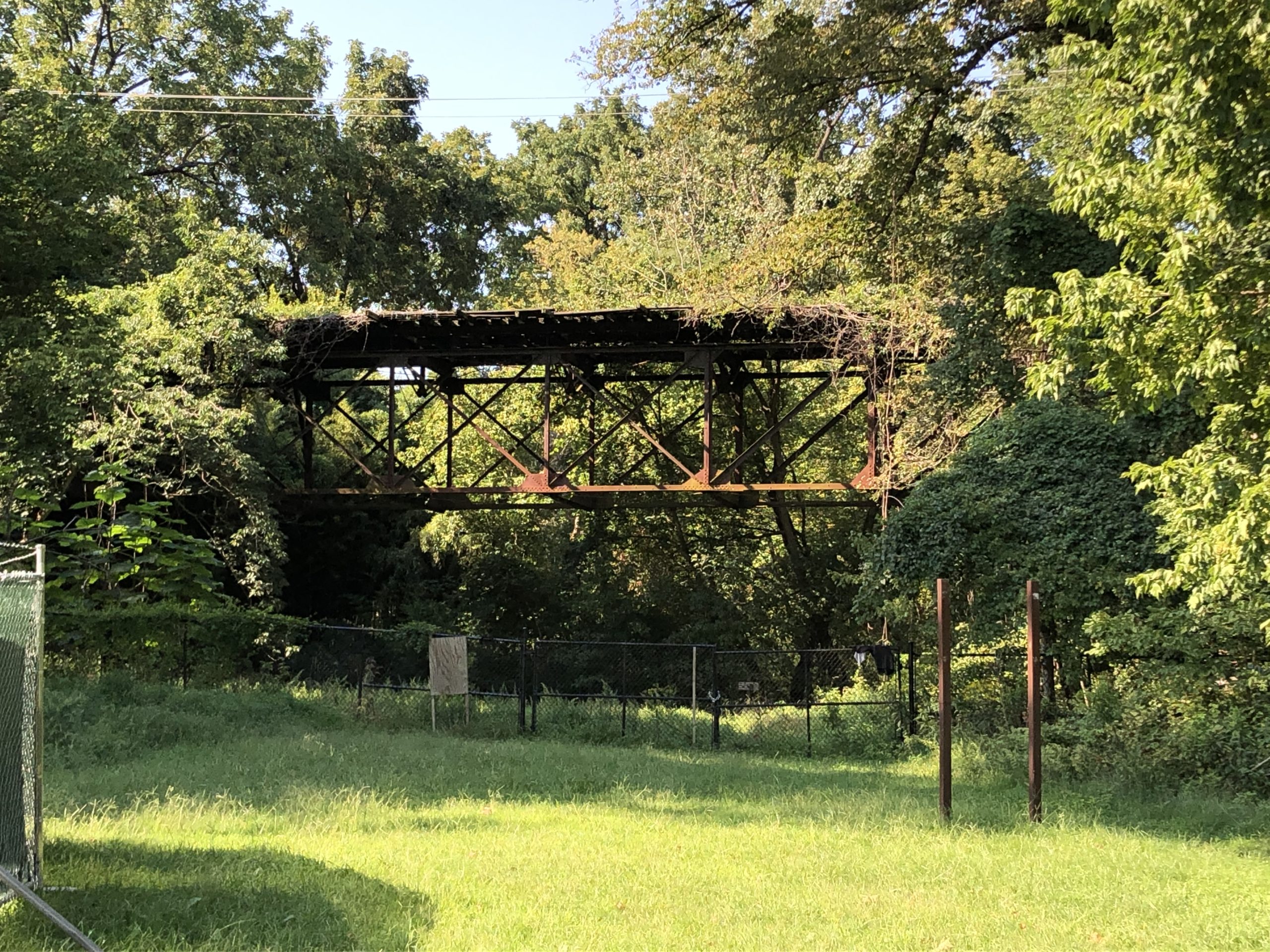Save the Foundry Branch Trolley Trestle!

Thank you for taking the time to send a letter to Mayor Bowser and the DC Council in support of saving the Foundry Branch Trolley Trestle from demolition and repurposing it into a multipurpose pedestrian, cycling trail.

The Foundry Branch Trestle is the only remaining one of at least eight or ten that originally lined the route of the Washington and Great Falls Railway from Georgetown to Cabin John, Maryland. This route is significant as a dramatic example of how real estate developers in the 1890s took advantage of newly electrified streetcar technology to expand the city into many new suburban locations. Earlier horse drawn streetcar systems were limited in range and ability to traverse rugged terrain. After electrical streetcars were successfully demonstrated in Richmond in 1888, there was an explosion of newly chartered lines offering speedier cars to more distant locations in newly developed suburbs. The construction of these suburban lines was a crucial element in the development of such suburbs as Eckington, Chevy Chase, Brightwood, Congress Heights, and many others in the DC area.
Originally chartered by Congress in 1892, the Washington and Great Falls Electric Railway’s route ran from 36th and Prospect Streets in Georgetown along the heights of the Potomac to Glen Echo and Cabin John in Maryland. It was built specifically to bring visitors to those two resorts. The charter specified an elevated railway to be built on piers over Canal Road, which proved infeasible and delayed construction until after the charter was revised in 1894, specifying a higher route along a ridge above the road. The railway opened late in 1895, offering riders spectacular views as they crossed trestles spanning deep ravines on their way to what was then the Chautauqua resort of Glen Echo or to the hotel further north at Cabin John. An 1895 newspaper article, written before the line opened, described how “throughout the entire length, it skirts along the high bluff overlooking and affording a panoramic view of this beautiful and historic river [the Potomac], and the Virginia hills, at times screened by the shady trees of the palisades which border it.” [1]
The route from Georgetown to Cabin John was one of the best loved in the Washington area and was universally considered the most scenic and breathtakingly beautiful. Throughout the streetcar era, Washingtonians developed fond memories of riding the streetcar out to the Glen Echo amusement park on summer weekends. (The whites-only park had been developed by the streetcar company around 1903 after the earlier Chautauqua resort failed.) Riding across the Foundry Branch trestle with a view out over the Potomac was a highlight of the trip.
An early firsthand account, published in 1899, offers a certain Pauline Pry’s observations on a day spent riding several suburban electric streetcar lines, including the Great Falls line, which she found beautiful but harrowing: “I’ve whizzed down hills, roared over bridges and whipped around curves… The beauty of the scenery is unsurpassed, but to be conscious of it you want to be utterly indifferent to life. You crash along, now hugging the edge of a high, oozing mud embankment skirting the canal, now pounding over a wooden trestle forty or sixty feet above the ground… Wooden trestles in this road are so numerous and so high I grow too dizzy to count them.…”[2]
[1] LeRoy O. King, Jr., 100 Years of Capital Traction: The Story of Streetcars in the Nation’s Capital (Taylor Publishing Co., 1972), 48; “Electric Line to Great Falls,” Washington Post, Jul. 26, 1895.
[2] “Speed and Schedule,” Evening Star, Aug. 26, 1899, 24.


DEMOLITION!
Transferred to WMATA in a court settlement in the 1990s, the only extant trolley trestle in the District is in a severe state of decay due to a lack of maintenance by the transit agency. Despite studies on utilizing the trestle as a pedestrian and bicycle connection between Foxhall Road and Georgetown, WMATA is seeking to demolish the historic structure. DCPL is fighting the city’s decision to approve the raze permit but has exhausted all legal options.
DCPL, ANC 3D and 2E, Georgetown University Students, and others remain hopeful that with the support of the public, this incredible historic asset can be rehabilitated to provide a safe alternative for pedestrians and bicyclists – including the many students who walk to the numerous nearby schools in Georgetown and the Palisades to the dangerous conditions on Canal Road.
‘Save the Trestle’: GUSA Initiative to Restore Historic Bridge Near Campus
-The Hoya, Ranee Brady (9/1/23)
DC Council Wants to Buy Georgetown’s Trolley Trestle and Turn it into a Trail
–NPR, Colleen Grablick (5/1/23)
An Honest Conversation with ANC Commissioner Joe Massaua
The Georgetown Review, Rob Arzano (5/22/23)
DC Council Wants To Buy Old Trestle Bridge, Convert Into Trail
DCist, Colleen Grablick (4/28/23)
Students, Neighborhood Residents Collaborate to Save Historic Bridge
The Hoya, Evie Steele (3/16/23)
Trail Project to Potentially Impact Georgetown
The Voice, Anne Mariecuccia (10/6/19)
The Palisades Trolley Trail is in disrepair, but there’s a plan to make it accessible for all – Greater Greater Washington, Anjum Rosha – Guest Contributor (7/23/19)
Meeting Tonight on Foundry Branch Trestle and Proposed Pedestrian Trail
Georgetown Metropolitan (7/23/19)
DC’s Last Trolley Trestle Is Saved From Demolition, For Now
Washington Post, Luz Lazo (9/23/18)
Preservation Board Nixes WMATA’s Application to Demolish Foundry Branch Trestle Georgetown Metropolitan, Steve Fernie (6/7/18)
Metro faces roadblock in race to demolish Georgetown trolley trestle
Washington Post, Luz Lazo (6/1/18)
Bridge Restoration Proposed
The Hoya, Kristen Fedor (10/21/14)
Foundry Branch Trolley Trestle Ruins
Atlas Obscura, Elliot Carter
Save the Foundry Branch Trolley Trestle!
DC Transit Trolley Crossing the Foundry Branch Trolley Trestle on its way to Glen Echo Park. From Raleigh D’Adamo’s Washington Streetcar Films.
